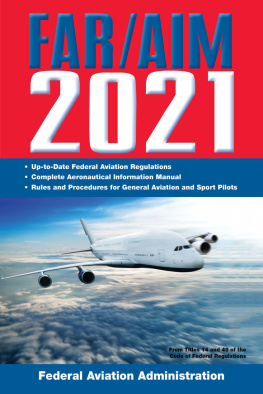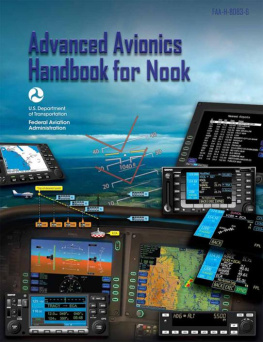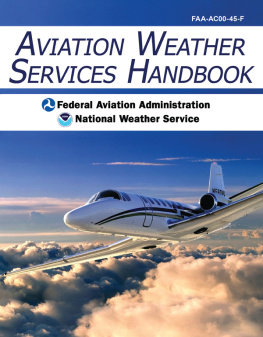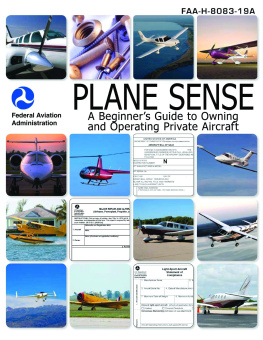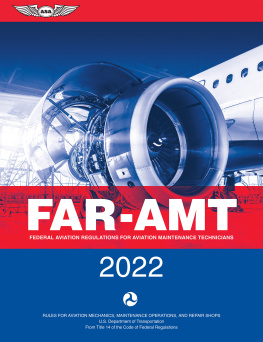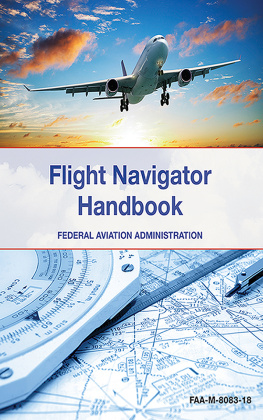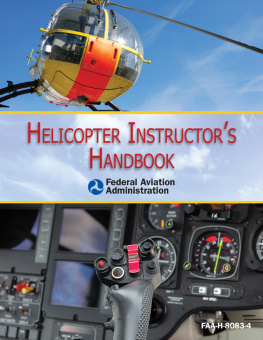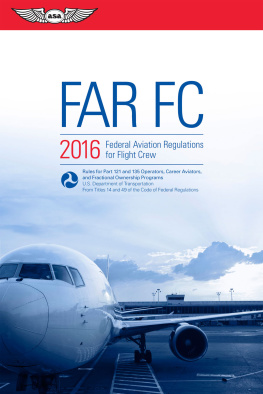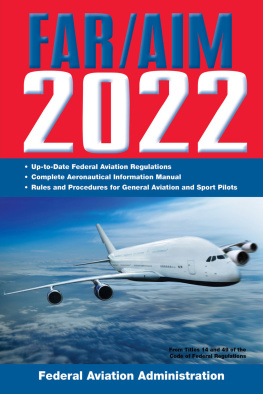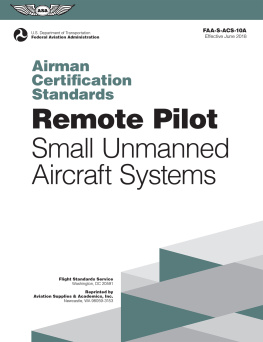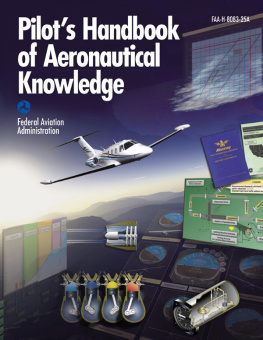Federal Aviation Administration - FAR/AIM 2021
Here you can read online Federal Aviation Administration - FAR/AIM 2021 full text of the book (entire story) in english for free. Download pdf and epub, get meaning, cover and reviews about this ebook. year: 2020, publisher: Skyhorse, genre: Politics. Description of the work, (preface) as well as reviews are available. Best literature library LitArk.com created for fans of good reading and offers a wide selection of genres:
Romance novel
Science fiction
Adventure
Detective
Science
History
Home and family
Prose
Art
Politics
Computer
Non-fiction
Religion
Business
Children
Humor
Choose a favorite category and find really read worthwhile books. Enjoy immersion in the world of imagination, feel the emotions of the characters or learn something new for yourself, make an fascinating discovery.
- Book:FAR/AIM 2021
- Author:
- Publisher:Skyhorse
- Genre:
- Year:2020
- Rating:3 / 5
- Favourites:Add to favourites
- Your mark:
- 60
- 1
- 2
- 3
- 4
- 5
FAR/AIM 2021: summary, description and annotation
We offer to read an annotation, description, summary or preface (depends on what the author of the book "FAR/AIM 2021" wrote himself). If you haven't found the necessary information about the book — write in the comments, we will try to find it.
Federal Aviation Administration: author's other books
Who wrote FAR/AIM 2021? Find out the surname, the name of the author of the book and a list of all author's works by series.
FAR/AIM 2021 — read online for free the complete book (whole text) full work
Below is the text of the book, divided by pages. System saving the place of the last page read, allows you to conveniently read the book "FAR/AIM 2021" online for free, without having to search again every time where you left off. Put a bookmark, and you can go to the page where you finished reading at any time.
Font size:
Interval:
Bookmark:
FEDERAL AVIATION REGULATIONS (FAR)
CONTENTS
Title 14 Aeronautics and Space
Title 49 Transportation
AERONAUTICAL INFORMATION MANUAL (AIM)
CONTENTS
ELECTRONIC CODE OF FEDERAL REGULATIONS
e-CFR data is current as of November 9, 2020
PART 1DEFINITIONS AND ABBREVIATIONS
AUTHORITY: 49 U.S.C. 106(f), 106(g), 40113, 44701.
1.1 General definitions.
As used in Subchapters A through K of this chapter, unless the context requires otherwise:
Administrator means the Federal Aviation Administrator or any person to whom he has delegated his authority in the matter concerned.
Aerodynamic coefficients means non-dimensional coefficients for aerodynamic forces and moments.
Air carrier means a person who undertakes directly by lease, or other arrangement, to engage in air transportation.
Air commerce means interstate, overseas, or foreign air commerce or the transportation of mail by aircraft or any operation or navigation of aircraft within the limits of any Federal airway or any operation or navigation of aircraft which directly affects, or which may endanger safety in, interstate, overseas, or foreign air commerce.
Aircraft means a device that is used or intended to be used for flight in the air.
Aircraft engine means an engine that is used or intended to be used for propelling aircraft. It includes turbosuperchargers, appurtenances, and accessories necessary for its functioning, but does not include propellers.
Airframe means the fuselage, booms, nacelles, cowlings, fairings, airfoil surfaces (including rotors but excluding propellers and rotating airfoils of engines), and landing gear of an aircraft and their accessories and controls.
Airplane means an engine-driven fixed-wing aircraft heavier than air, that is supported in flight by the dynamic reaction of the air against its wings.
Airport means an area of land or water that is used or intended to be used for the landing and takeoff of aircraft, and includes its buildings and facilities, if any.
Airship means an engine-driven lighter-than-air aircraft that can be steered.
Air traffic means aircraft operating in the air or on an airport surface, exclusive of loading ramps and parking areas.
Air traffic clearance means an authorization by air traffic control, for the purpose of preventing collision between known aircraft, for an aircraft to proceed under specified traffic conditions within controlled airspace.
Air traffic control means a service operated by appropriate authority to promote the safe, orderly, and expeditious flow of air traffic.
Air Traffic Service (ATS) route is a specified route designated for channeling the flow of traffic as necessary for the provision of air traffic services. The term ATS route refers to a variety of airways, including jet routes, area navigation (RNAV) routes, and arrival and departure routes. An ATS route is defined by route specifications, which may include:
(1) An ATS route designator;
(2) The path to or from significant points;
(3) Distance between significant points;
(4) Reporting requirements; and
(5) The lowest safe altitude determined by the appropriate authority.
Air transportation means interstate, overseas, or foreign air transportation or the transportation of mail by aircraft.
Alert Area. An alert area is established to inform pilots of a specific area wherein a high volume of pilot training or an unusual type of aeronautical activity is conducted.
Alternate airport means an airport at which an aircraft may land if a landing at the intended airport becomes inadvisable.
Altitude engine means a reciprocating aircraft engine having a rated takeoff power that is producible from sea level to an established higher altitude.
Amateur rocket means an unmanned rocket that:
(1) Is propelled by a motor or motors having a combined total impulse of 889,600 Newton-seconds (200,000 pound-seconds) or less; and
(2) Cannot reach an altitude greater than 150 kilometers (93.2 statute miles) above the earths surface.
Appliance means any instrument, mechanism, equipment, part, apparatus, appurtenance, or accessory, including communications equipment, that is used or intended to be used in operating or controlling an aircraft in flight, is installed in or attached to the aircraft, and is not part of an airframe, engine, or propeller.
Approved , unless used with reference to another person, means approved by the FAA or any person to whom the FAA has delegated its authority in the matter concerned, or approved under the provisions of a bilateral agreement between the United States and a foreign country or jurisdiction.
Area navigation (RNAV) is a method of navigation that permits aircraft operations on any desired flight path.
Area navigation (RNAV) route is an ATS route based on RNAV that can be used by suitably equipped aircraft.
Armed Forces means the Army, Navy, Air Force, Marine Corps, and Coast Guard, including their regular and reserve components and members serving without component status.
Autorotation means a rotorcraft flight condition in which the lifting rotor is driven entirely by action of the air when the rotorcraft is in motion.
Auxiliary rotor means a rotor that serves either to counteract the effect of the main rotor torque on a rotorcraft or to maneuver the rotorcraft about one or more of its three principal axes.
Balloon means a lighter-than-air aircraft that is not engine driven, and that sustains flight through the use of either gas buoyancy or an airborne heater.
Brake horsepower means the power delivered at the propeller shaft (main drive or main output) of an aircraft engine.
Calibrated airspeed means the indicated airspeed of an aircraft, corrected for position and instrument error. Calibrated airspeed is equal to true airspeed in standard atmosphere at sea level.
Canard means the forward wing of a canard configuration and may be a fixed, movable, or variable geometry surface, with or without control surfaces.
Canard configuration means a configuration in which the span of the forward wing is substantially less than that of the main wing.
Category:
(1) As used with respect to the certification, ratings, privileges, and limitations of airmen, means a broad classification of aircraft. Examples include: airplane; rotorcraft; glider; and lighter-than-air; and
(2) As used with respect to the certification of aircraft, means a grouping of aircraft based upon intended use or operating limitations. Examples include: transport, normal, utility, acrobatic, limited, restricted, and provisional.
Category A, with respect to transport category rotorcraft, means multiengine rotorcraft designed with engine and system isolation features specified in Part 29 and utilizing scheduled takeoff and landing operations under a critical engine failure concept which assures adequate designated surface area and adequate performance capability for continued safe flight in the event of engine failure.
Category B, with respect to transport category rotorcraft, means single-engine or multiengine rotorcraft which do not fully meet all Category A standards. Category B rotorcraft have no guaranteed stay-up ability in the event of engine failure and unscheduled landing is assumed.
Category II operations, with respect to the operation of aircraft, means a straight-in ILS approach to the runway of an airport under a Category II ILS instrument approach procedure issued by the Administrator or other appropriate authority.
Category III operations, with respect to the operation of aircraft, means an ILS approach to, and landing on, the runway of an airport using a Category III ILS instrument approach procedure issued by the Administrator or other appropriate authority.
Next pageFont size:
Interval:
Bookmark:
Similar books «FAR/AIM 2021»
Look at similar books to FAR/AIM 2021. We have selected literature similar in name and meaning in the hope of providing readers with more options to find new, interesting, not yet read works.
Discussion, reviews of the book FAR/AIM 2021 and just readers' own opinions. Leave your comments, write what you think about the work, its meaning or the main characters. Specify what exactly you liked and what you didn't like, and why you think so.

